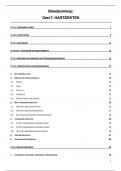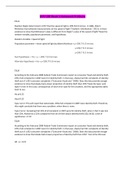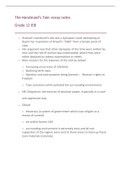Tentamen (uitwerkingen)
Test Bank For Seidel's Guide to Physical Examination An Interprofessional Approach 10th Edition by Jane W. Ball, Joyce E. Dains, All- Chapter 1 - 26
Test Bank For Seidel's Guide to Physical Examination An Interprofessional Approach 10th Edition by Jane W. Ball, Joyce E. Dains Chapter 1 - 26 Test Bank For Seidel's Guide to Physical Examination An Interprofessional Approach 10th Edition by Jane W. Ball, Joyce E. Dains Chapter 1 - 26 Test Bank F...
[Meer zien]






